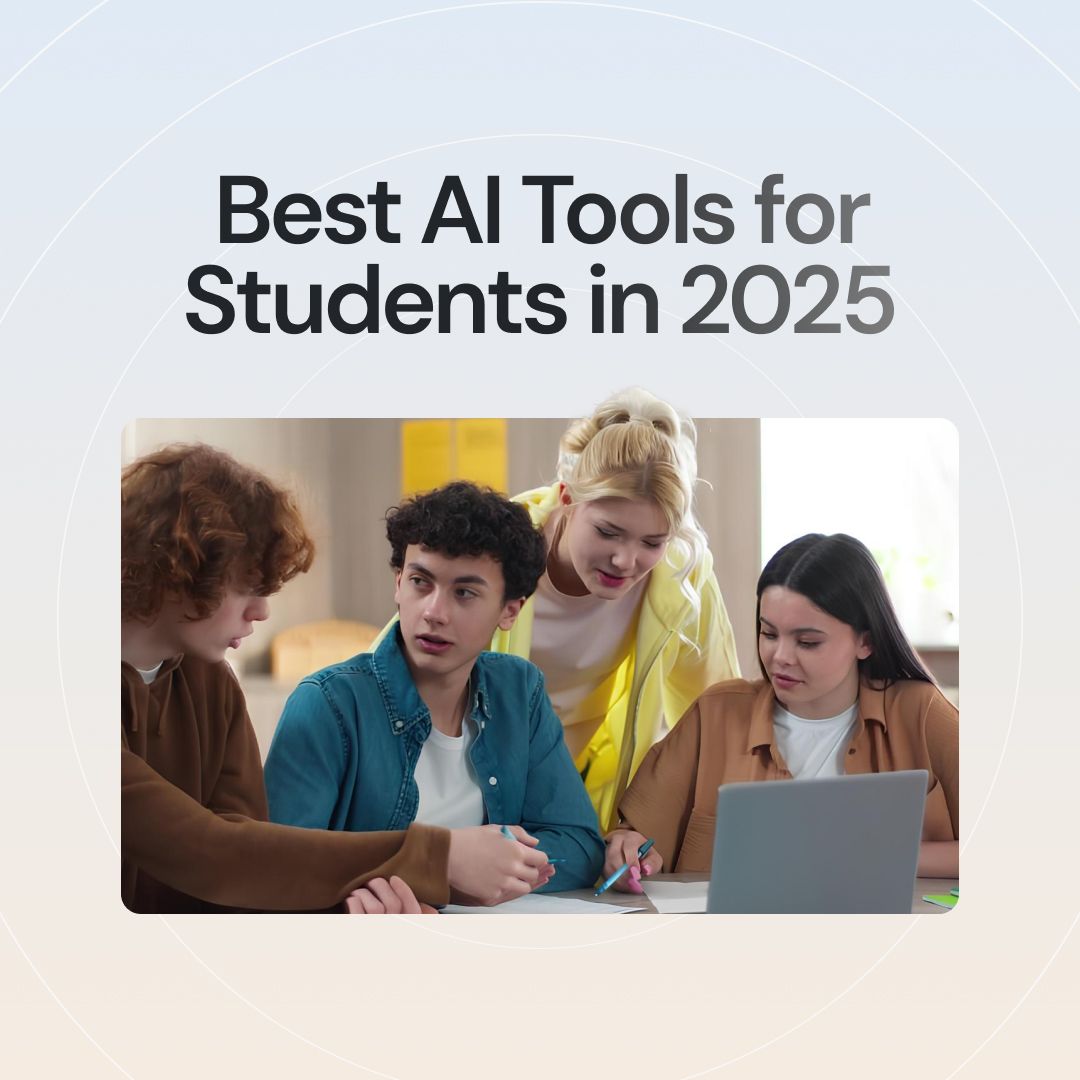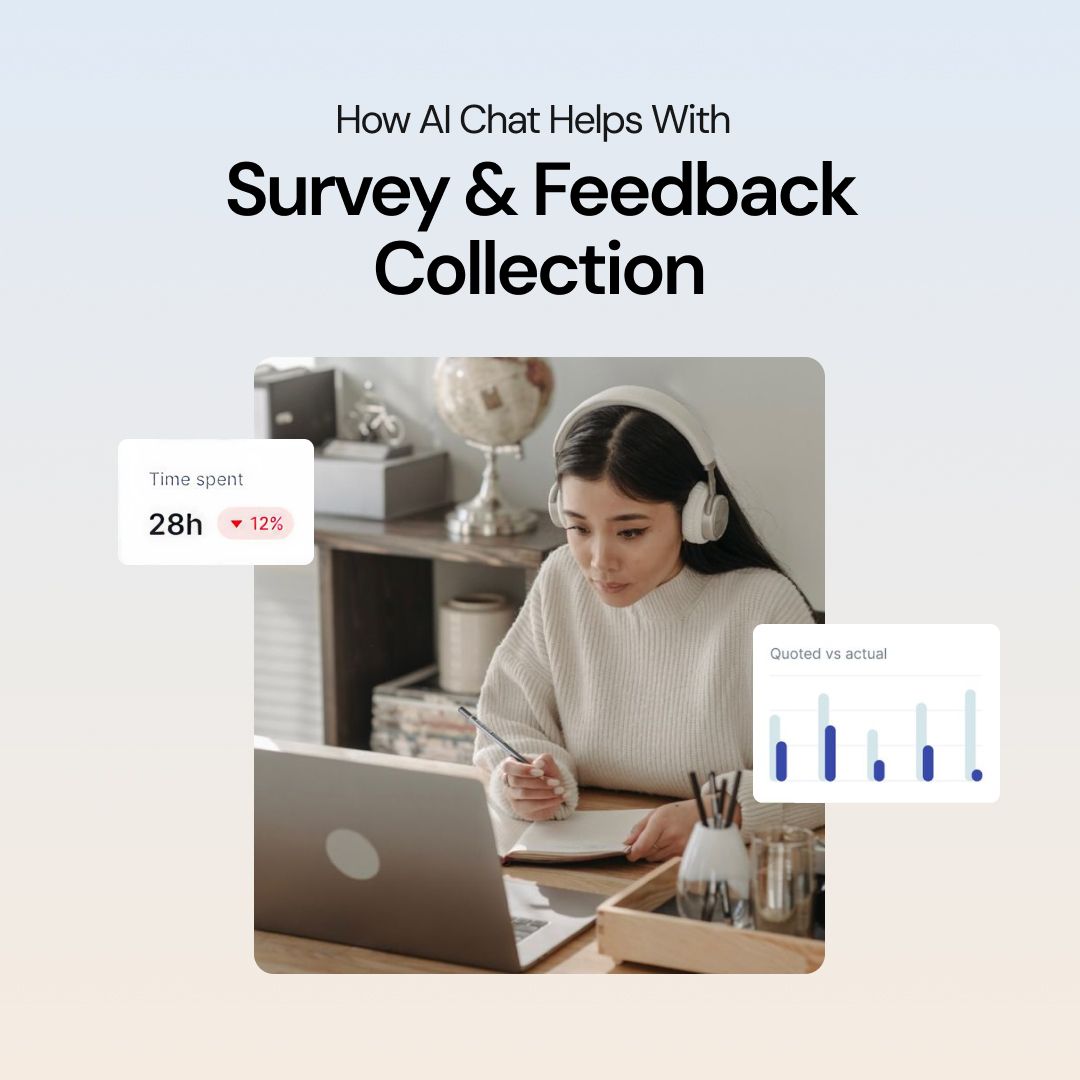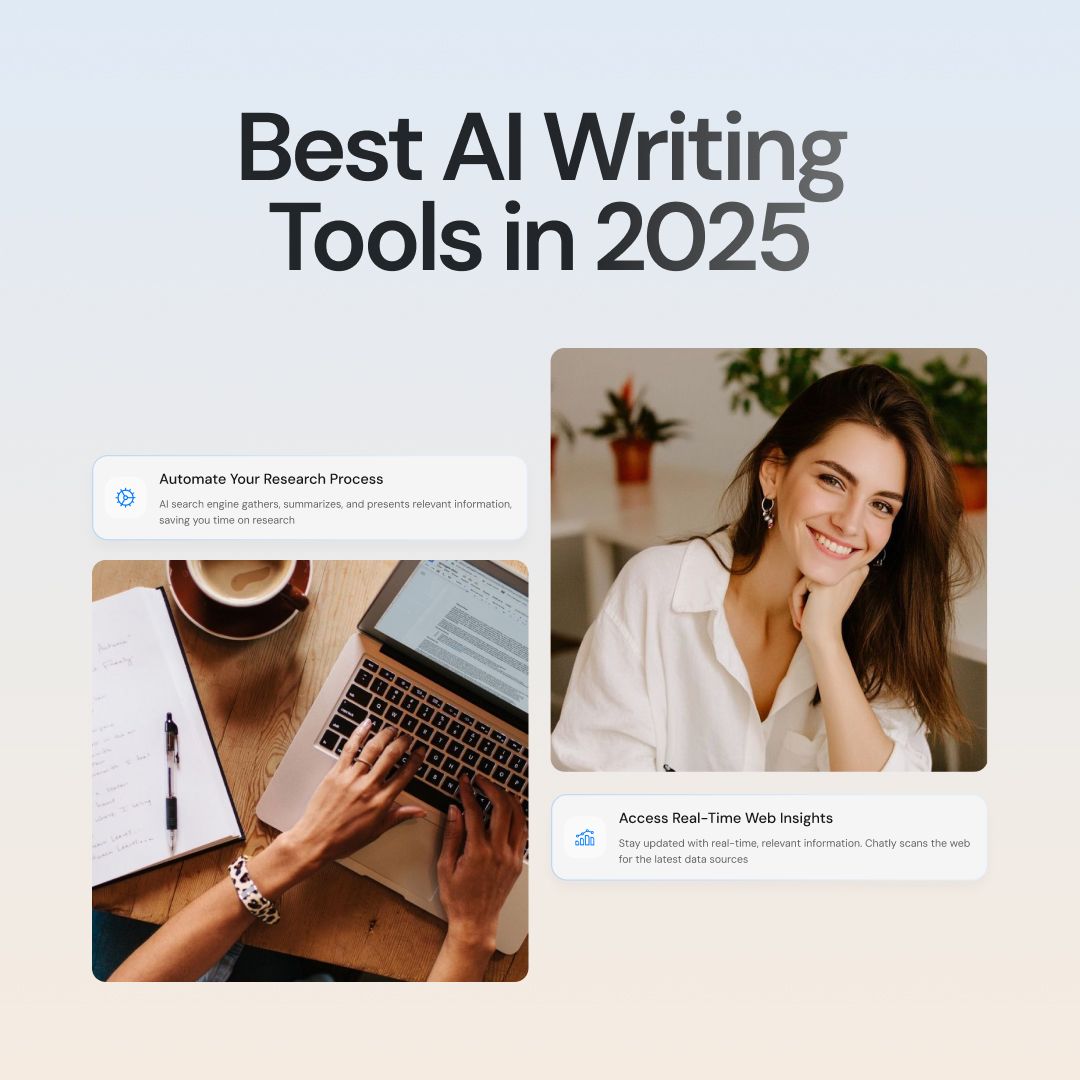
What Is an AI Assistant? Definition, Benefits, and 12 Key Uses
AI assistants have become impossible to ignore. They plan meetings, answer questions, draft reports, and keep tasks moving faster than human hands can type. Search results for AI assistant now flood with options, such as Chatly, ChatGPT, Gemini and more, making the definition less clear than ever.
Some treat them as fancy chatbots. Others rely on them as full digital workers.
The truth sits in the middle: an AI assistant is neither just a toy nor a replacement for people, but a practical layer of intelligence stitched into everyday work and personal life.
This guide breaks down what an AI assistant really is, how it operates, the benefits it offers, and twelve core categories shaping today’s market.
What Is an AI Assistant?
An AI assistant is software designed to understand natural language and carry out tasks. It takes your text or voice input, interprets what you mean, and produces results that would normally take more time if done manually.
Early assistants such as Siri and Alexa could only manage simple functions like reminders, weather checks, or playing music.
Modern AI assistants are much more capable. They use large language models (LLMs) and machine learning to write essays, summarize long reports, analyze data, and connect with multiple applications.
At the core, an AI assistant works by:
-
Understanding your instructions through natural language processing (NLP).
-
Deciding the right action, whether searching, analyzing, or creating new content.
-
Delivering the output in text, voice, or actions such as emails and calendar invites.
The difference today lies in flexibility. Older bots followed strict rules and often felt limited. Newer assistants adapt and improve with use, learning from new inputs to provide better responses. That adaptability makes them genuine productivity partners.
These assistants can appear as standalone apps, built-in features of business platforms, or browser-based chat systems. Chatly is one example, combining AI chat, AI search, and creative drafting tools in one workspace, making it useful for research, writing, and everyday productivity.
How Do AI Assistants Work?
AI assistants function through a sequence of processes that turn human language into action. They don’t just hear commands – they interpret, decide, and respond.
Language Understanding
Decision and Reasoning
Once the input is clear, algorithms evaluate possible actions. A request might require searching the web, retrieving stored data, or connecting with a linked application. Large language models like GPT or Claude supply the reasoning layer, predicting the best response based on training data and context.
Action and Response
The final step is output. For text-based tasks, assistants generate written responses. For voice-driven requests, text-to-speech systems convert replies into natural speech. In business workflows, the assistant might also execute actions – sending a calendar invite, categorizing an email, or pulling figures from a database.
Continuous Improvement
Modern assistants adapt with use. Feedback loops and repeated exposure refine accuracy over time. An assistant that misinterprets an instruction once may improve when the same query arises later. This ability to learn differentiates them from earlier rule-based bots.
Benefits of Using an AI Assistant
The value of AI assistants extends beyond convenience. They improve efficiency, support scale, and reduce costs in measurable ways.
Save Time on Repetitive Work
Routine tasks like scheduling, email triage, and data lookups consume hours each week. AI assistants complete them in seconds, leaving space for higher-value activities.
Increase Productivity Across Workflows
By offloading repetitive tasks, teams gain focus. A sales team can spend less time logging data and more time closing deals. A student can skip endless web searches and move directly into structured research notes.
Reduce Operational Costs
Hiring additional staff for administrative tasks is expensive. AI assistants cover many of these responsibilities without recurring salaries, benefits, or office overhead. They also minimize errors, preventing costly mistakes.
Provide 24/7 Availability
Human workers need rest. AI assistants remain active around the clock, responding instantly whether the request comes at 2 p.m. or 2 a.m. Global businesses in particular benefit from constant support.
Integrate Seamlessly with Existing Tools
Many assistants connect with email platforms, CRM systems, and project management software. A query for customer details can pull directly from a CRM record. A scheduling request can link with Google Calendar. Chatly, for instance, offers integration flexibility, allowing workflows to extend across multiple apps from one interface.
Top AI Assistants in 2025
AI assistants are everywhere, but not all are equal. Some focus on narrow tasks, others serve as broad productivity platforms. These are the leading assistants today.
Chatly
Chatly is more than a chatbot. It combines AI chat, AI search, and creative tools in one workspace. Multi-model access gives users flexibility: compare answers, draft content, or conduct research with different AI engines. Students use it for academic writing, professionals use it for workflows, and businesses use it for research and content.
ChatGPT
Built by OpenAI, ChatGPT is well known for natural conversation. It generates essays, writes code, and answers questions in a way that feels human. Many people use it for brainstorming and writing support.
Google Gemini
Gemini is embedded into Google products like Docs, Gmail, and Search. Its strength is deep integration into productivity suites that many users already depend on daily.
Anthropic Claude
Claude is strong in context-heavy responses and long documents. Researchers and analysts choose it for summarizing lengthy material and for safety-focused design.
Microsoft Copilot
Copilot lives inside Microsoft 365. It assists with Excel formulas, Word drafting, Teams meeting notes, and Outlook email handling. It’s designed to boost enterprise productivity.
Siri and Alexa
Siri and Alexa are voice-first assistants, and remain popular for personal use. They handle music, reminders, and smart home controls. Their scope is narrower compared to multi-modal AI assistants.
12 Types of AI Assistants You Can Find Easily
AI assistants can be grouped into clear categories. Each solves specific problems in work or personal life.
AI Writing and Content Assistants
These assistants draft articles, emails, and reports. They improve grammar, refine tone, and suggest style changes. Chatly and Grammarly are examples.
AI Scheduling Assistants
They automate calendars, find open time slots, and send meeting reminders. Lindy and Clockwise are examples of scheduling tools.
AI Email Assistants
Email assistants organize inboxes, draft replies, and prioritize important messages. Chatly and Flowrite handle professional outreach and everyday inbox management.
AI Transcription Assistants
Transcription tools turn spoken language into accurate text. They summarize meetings, interviews, and lectures. Otter.ai and Fireflies are common picks.
AI Customer Service Assistants
These assistants automate FAQ handling, bookings, and complaint resolution. Zendesk and Intercom deliver customer support at scale with AI.
AI Medical Assistants
They assist clinicians with patient triage, SOAP note-taking, and scheduling. Ada Health and Babylon are examples, alongside HIPAA-compliant AI scribes.
AI Legal Assistants
Legal assistants draft contracts, review documents, and conduct research. DoNotPay and ContractPod AI support lawyers and legal teams.
AI Voice Assistants
Voice-based AI interprets commands for web search, calls, or smart device control. Google Assistant and Alexa dominate here.
AI Personal Finance Assistants
These tools track spending, build budgets, and give savings advice. Cleo and Quicken AI provide financial coaching.
AI HR Assistants
HR assistants handle recruitment, onboarding, and employee queries. X0PA AI and Talla are used for hiring and staff management.
AI Coding Assistants
Coding assistants suggest code, debug issues, and explain programming logic. GitHub Copilot and Chatly’s coding support are examples.
AI Learning and Educational Assistants
They support students with tutoring, study sets, and interactive learning. Quizlet and Carnegie Learning provide personalized study paths.
How to Choose the Right AI Assistant
Picking the right AI assistant depends on your needs and tools. A rushed choice often leads to wasted time, so evaluation matters.
Identify Daily Workflows
List the tasks you handle every day. Emails, scheduling, note-taking, research, customer service, or data entry. Match assistants to these tasks instead of chasing features you may never use.
Check Integrations
A good AI assistant must connect with your existing platforms. CRM, email, project management, and document storage should link seamlessly. Chatly supports integrations that bridge research, drafting, and productivity inside one workspace.
Review Privacy and Compliance
Data handling is critical. Look for end-to-end encryption, SOC 2 compliance, and HIPAA options if dealing with sensitive records. Choose platforms that clearly publish their security standards.
Assess Scalability
Think ahead. If your needs grow, will the assistant handle more tasks, more users, and more automations without forcing a costly upgrade? Scalability ensures long-term value.
Test Free Versions
Most providers, including Chatly, offer free access or trial credits. Test real workflows before committing. That trial often reveals whether the assistant saves time or adds friction.
Are AI Assistants Worth It?
AI assistants have moved beyond novelty. Businesses and individuals report measurable returns when they replace manual routines with automated ones.
Tangible Benefits
Accuracy improves with automation of repetitive tasks like data entry, scheduling, and email triage. Communication speeds up. Personalization becomes possible at scale, offering tailored support or recommendations based on history and preferences.
Known Limitations
These assistants cannot truly empathize. They are not general intelligence systems and struggle with complex nuance. Data privacy concerns remain real, requiring careful platform choice.
Overall Value
Even with limitations, AI assistants consistently save time, reduce costs, and expand capabilities. Their role is not to replace people but to amplify what teams and individuals can accomplish.
Conclusion
AI assistants are shaping the way work gets done across industries and personal life. They understand natural language, take action across multiple tools, and adapt over time to user needs.
The best choice starts with identifying your goals and matching them to the right platform.
Chatly leads the way with multi-model access, AI search, and seamless productivity support in one workspace. Testing it is free, making it an ideal entry point for anyone ready to see the value of an AI assistant in action.
Suggested Reads
Frequently Asked Questions
Here are the top questions related to understanding what is an AI assistant.
More topics you may like

11 Best ChatGPT Alternatives (Free & Paid) to Try in 2025 – Compare Top AI Chat Tools

Muhammad Bin Habib

24/7 Customer Support with AI Chat: Benefits, Examples and More

Muhammad Bin Habib

28 Best AI Tools for Students in 2025 – The Complete AI-Powered Academic Success Guide

Muhammad Bin Habib

How AI Chat Helps with Survey & Feedback Collection

Muhammad Bin Habib

Best AI Writing Tools That You Can Use in 2025 (Free & Paid)

Muhammad Bin Habib
